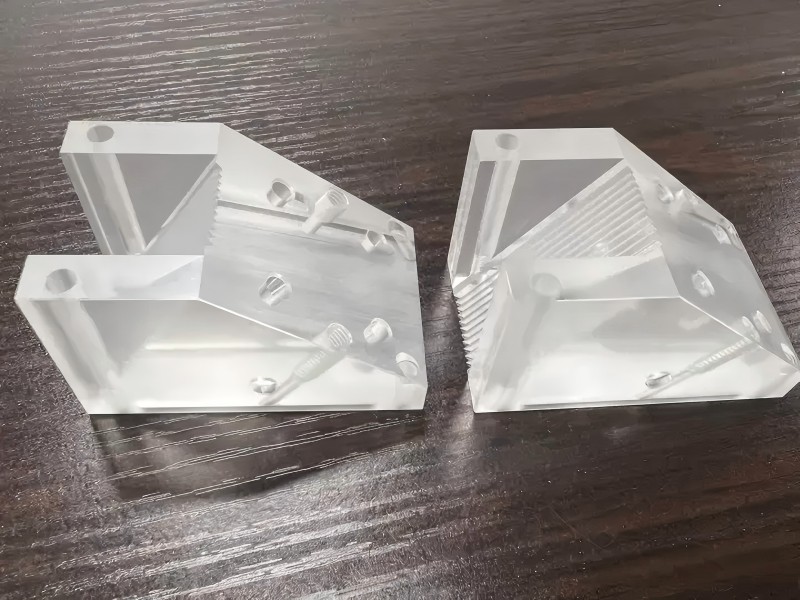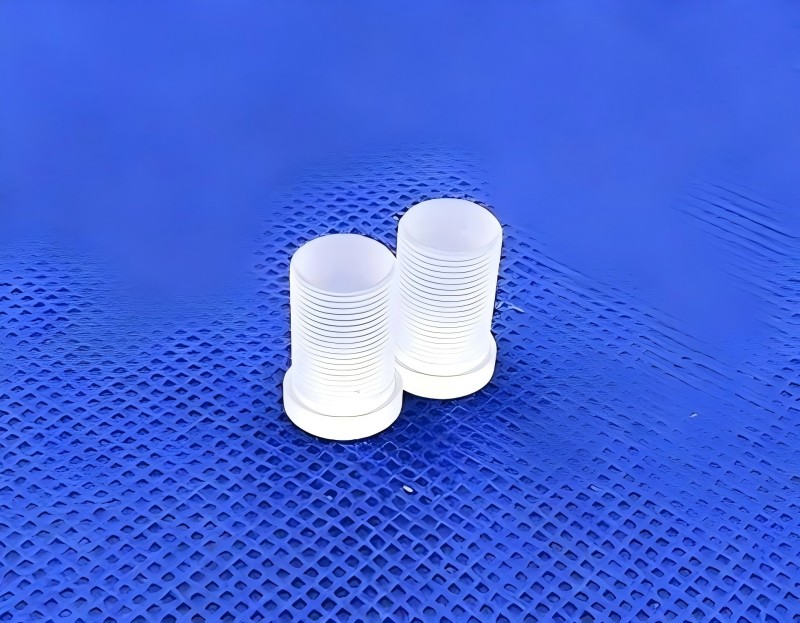Reaction mechanism: body + cross-linking agent, through heat, light or irradiation initiated cross-linking polymerization reaction
Finished product style: mainly sheet and bar, other shapes depend on the mold.
Outstanding properties of cross-linked polystyrene
Low density:
Density of 1.05g/cm³, 15% lower than acrylics and half that of PTFE.
Dielectric properties:
Dielectric constant of 2.53, loss factor as low as 0.0004, dielectric stability and no significant change at different frequencies (especially at 1MHz~500GHz); suitable for microwave lenses, microwave circuits, antennas, coaxial cable connectors, sound transducers, TV satellite antennas and sonar lenses.
Resistant to high voltage shock:
Dielectric strength >21kv/mm, far superior to acrylic resin, epoxy resin, polyurethane and other plastics; cross-linked polystyrene can withstand high voltage, can be used for high-voltage insulators, manufacture of high-voltage resistant fittings such as spacer switch boxes. For example, C-Lec's cross-linked polystyrene product Rexolite has been successfully used for high-voltage insulating cones, and its performance is superior to that of acrylic resins.
Radiation resistance:
Cross-linked polystyrene has excellent radiation resistance, which is better than most plastics, and its dielectric loss is almost unchanged when exposed to 1000Mrads of irradiation. Mechanical properties remain good under particle irradiation.
Rigidity and dimensional stability:
Cross-linked polystyrene has no permanent deformation or plastic flow, and has been internally stress relieved during production and preparation, and does not need to be stress relieved again in later use, so it has the advantages of high rigidity and good dimensional stability. For example, Rexolite does not produce permanent deformation or plastic flow under loads of 10 to 2,000 PSI and temperatures of 20 to 50 degrees Celsius. In addition, the casting process is carried out under stress-free conditions, so there is no need for stress assistance before, during or after the machining of the parts.
Wide temperature range:
Recommended operating temperature of 100°C; glass transition temperature of 114°C; excellent dielectric properties in the range of -270°C to 176°C (without load for short periods).
Excellent Optical Properties:
Cross-linked polystyrene has outstanding optical properties, with light transmittance essentially equal to that of acrylic resins, and a visible light transmittance of 87% for one-inch thick panels. The refractive indexes of 1.59, 1.604, and 1.585 correspond to 589, 486, and 656 nanometers of incident light, respectively. Used in combination with acrylic lenses for color correction.
Excellent acoustic properties:
Cross-linked polystyrene's sound barrier is close to that of water, with a sound propagation speed of 93*10"1 sec and negligible air permeability. Its water absorption is less than 5 parts per million, and the dielectric constant does not change when immersed in boiling water for 1000 hours.
Excellent chemical resistance:
Good chemical resistance to acids, alkalis, salt solutions, aliphatic hydrocarbon solvents; exposure to aromatic hydrocarbons causes swelling and should be avoided.
Good machinability:
Can be processed using any form of machining method. Due to the high resistance to cold flow and the absence of stress, it can be cut mechanically or with a laser beam, with small tolerances and an accuracy of 0.0001 after grinding; it will not crack if sharp tools are used and if it is not overheated during beating.
Application Areas for Crosslinked Polystyrene
CPS maintains a dielectric constant of 2.53 in the 500Ghz range and has an extremely low dissipation factor.The unique combination of dielectric properties, stability, processability, and chemical resistance makes CPS materials a versatile choice for a wide variety of industries.Major applications for CPS include the following:
Military
CPS is widely used in the military due to its high dielectric strength and microwave transparency. It is used in radar systems, precision-guided munitions, high-frequency communications equipment, electronic warfare equipment, and optical components for surveillance systems, providing enhanced signal clarity, reliability, and durability in demanding military environments.
Aerospace
CPS's lightweight and stabilizing properties in a variety of environmental conditions make it suitable for aerospace applications. It is used in components that need to withstand extreme temperatures and pressures without distortion or loss of function. Its use in radar systems, especially in aircraft and satellites, is significant because of its transparency to microwaves and other forms of radiation.
Telecommunications
For electronics and telecommunications, CPS's high dielectric strength and low loss angular tangent make it ideal for components requiring efficient signal transmission and minimal energy loss. It is used in high-frequency applications such as antennas, connectors and insulators. It minimizes signal loss, which is critical to maintaining the integrity of communications in advanced electronic equipment.
Medical
In the medical industry, CPS is used in applications where its radiation transparency is critical. Found in components of diagnostic imaging equipment such as X-ray machines and MRI scanners, CPS allows various forms of radiation to pass through undisturbed, which is critical to creating clear and accurate imaging.
Scientific Research
Research organizations utilize CPS for optical clarity and precision in scientific instruments. It is used in components of optical systems and in experimental setups where its stable, non-reactive properties are important. Its chemical resistance also makes it suitable for laboratory equipment exposed to a wide range of chemicals.
Manufacturing
CPS is valued for its processability and stability in a variety of industrial environments. It is used in the manufacture of precision parts where accurate size and shape retention are critical. Its resistance to a wide range of chemicals makes it the material of choice in environments where corrosion resistance is required.

























